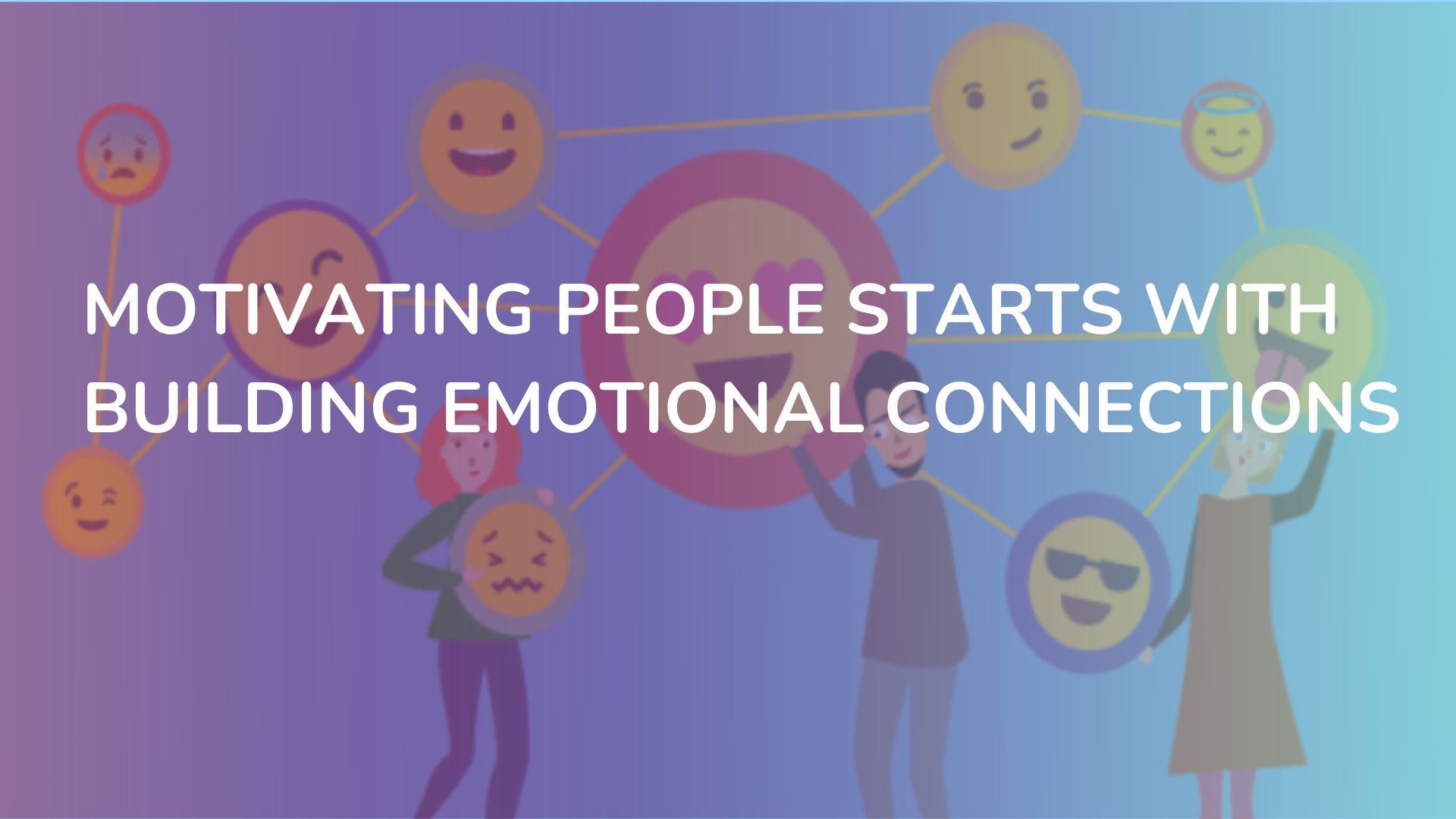Motivating People Starts with Building Emotional Connections
Author:
Scott Edinger: founder of Edinger Consulting, is a coauthor of Making Yourself Indispensable and author of The Hidden Leader: Discover and Develop Greatness Within Your Company. Scott’s next book, The Growth Leader: Strategies to Drive the Top and Bottom Lines, is coming out in September of 2023.
Summary
Thousands of years ago, Aristotle identified pathos as a critical element in communication and persuasion. As the maxim suggests, logic makes us think, but emotions make us act. In this piece, the author offers three ways to harness the power of emotion to motivate your team: 1) Cultivate the energy that flows from enthusiasm. 2) Recognize what’s behind anger and put it to better use. 3) Drive deeper engagement with a focus on development.
If you want to inspire and motivate others to achieve high levels of performance, tap into the power of emotion. In the research for our book, The Inspiring Leader, my coauthors and I analyzed 360-degree survey data on 25,000 leaders. We discovered that those who were most inspiring (the top 10% of the group) had something unique in common: their ability to establish a strong emotional connection with their employees.

When I discuss emotional connection with executives, I’m not suggesting excessive displays of emotion, oversharing of personal information, or getting into therapy sessions with colleagues. Rather, it’s about connecting with our teams, our peers, and our bosses as humans with emotions, not task-focused automatons. It’s the emotions that you as a leader evoke within others that enable you to bring out the best in them.
Thousands of years ago, Aristotle identified pathos as a critical element in communication and persuasion. Pathos, in philosophy and rhetoric, is a purposeful appeal to emotion to evoke specific feelings in one’s audience. Aristotle understood way back then that the human connection makes a huge difference in provoking action. As the maxim suggests, logic makes us think, but emotions make us act.
Here are three ways I’ve coached executives to harness the power of emotion to motivate the people they work with and drive better results:
1. Cultivate the energy that flows from enthusiasm.
Most of us have felt an added wind in our sails when we are excited about a project or the work we are doing. As a leader, you can channel this energy by sharing your passion for the results that need to be achieved. But first, you may need to access it yourself.

I worked with a chief data officer who was easily the most knowledgeable person in the business when it came to analytics. I wouldn’t call him negative, but certainly lacking a positive charge. His focus in meetings was like Agent Friday from Dragnet: “just the facts, ma’am.” He recognized the need to get out of the spreadsheets and use data to connect with others — both about the issues they cared deeply about solving, and the business outcomes they were excited to achieve. I suggested he focus on three questions:
- What about this [meeting/idea/topic] gives me reasons for optimism?
- How does it connect to a greater outcome than we are talking about?
- How can I share this with positive energy?
After six months of consistent efforts to create more productive energy, his peers, direct reports, and the CEO observed that he was a better collaborator and had a broader perspective on the business. They found him more strategic and motivating.
This is not to suggest false positivity. Susan David’s research on toxic positivity has shown how forcing a happy face can be detrimental to your health. It also doesn’t mean you must be the Energizer Bunny and maintain constant halftime speech levels of enthusiasm. In fact, that approach can get tiring for people. It’s most effective to consistently draw connections for your team between the mundane and your vision for the future: a necessary set of tasks or a short-term grind can lead to important outcomes for your customers, patients, guests, the business, or the environment. Whatever the results are, establishing a clear line of sight with vitality can create a dynamic drive forward.
2. Recognize what’s behind anger and put it to better use.
Anger has a place in leadership. It’s a powerful emotion and drives action, providing valuable energy in discussing concerns and fears and conveying urgency. Unfortunately, anger is often misused and loses its effectiveness.

Expressing anger by yelling or raising your voice, cutting people off, and speaking aggressively is likely to be met with strong defensiveness or a shut down from others. For leaders, the most effective way to express anger is by rationally expressing the real concern behind the anger. In business, anger is typically the front for worry or concern about what will happen if something doesn’t work out as planned. Or it may be shielding fear and distress about the consequences of a bad result. Frequently, it’s the emotions behind anger that can help you connect in a more meaningful way and strengthen relationships.
The next time you feel angry, take a beat to breathe and ask yourself:
- Am I angry, or is there something else I’m feeling?
- If you answer, “I’m just angry!” try coming up with a couple of other options. Afraid? Distressed? Worried? About what?
- How can I express myself in a composed way so it motivates productive action?
Showing this kind of transparency about your feelings may be called vulnerability, and it can be a catalyst for building trust, fostering collaboration, and galvanizing teams. But for those who aren’t entirely comfortable with this term, just focus on using your anger more effectively. Try turning down the heat and calmly expressing disappointment about a situation, sharing your concerns, and openly inviting others to share their perspectives. This opens an opportunity for candid conversations with team members about not meeting a standard or an expectation, which can ultimately drive your team to commit more effort, correct critical mistakes, and finally address long-standing problems.
3. Drive deeper engagement with a focus on development
Coaching and developing others is statistically among the strongest competencies a leader has at their disposal for inspiring people to achieve high levels of performance. When people tell me about the best leaders they worked for, those leaders invariably took an interest in their professional growth.

The emotional connections made through mentoring and coaching pay off in the long term, for both parties. Leaders who prioritize developing people on their team report that doing so makes them feel powerful, strong, valuable, and important. They take pride in sharing their expertise and seeing the growth and success of their people. Those who are coached report that the confidence a leader showed in them by investing time and resources in their development made them feel more engaged in their work, increased their own confidence, and ultimately improved their performance.
Communicate your commitment and create a shared vision of success by expressing the following to those you coach:
- Your professional growth is important to me and to our team.
- I have confidence in your abilities and your potential.
- I’m willing to invest the time and resources necessary to help you achieve your goals.
Focusing on developing the people who work for you is an investment driving long-term business results. Time spent helping them perform better is what drives the emotional connection that leads to employee loyalty, motivation, and greater success for the team. As a boss who mentored me once shared, “My coaching and investment in your development aren’t entirely altruistic. I know that the better you get, the better our results will be.”
It’s easy to get caught in a whirlwind of all the stuff that needs to be done and forget that our primary role as leaders is to drive results through others. Employing emotion as part of your toolkit of leadership skills doesn’t require a lot of additive time. It does require a commitment to engage differently. Be willing to share what you are feeling with an intention to connect with others and try to understand how others are feeling as well. In my experience, the more leaders work on this, the better the results of those they lead.
So how do you motivate your people by building an emotional connection? Let us know your opinion and comment section via email phung.metta@metta.com.vn so we can support and help your business. Metta with solutions to support human resources will help you and your employees make positive changes and find happiness in work and life.
Metta Marketing
Top brand strategy consultant










